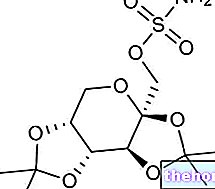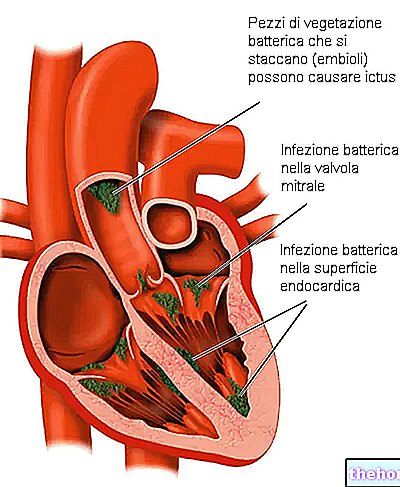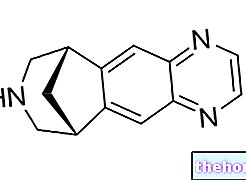Definition
Urticaria is one of the most frequent and annoying skin diseases, even if relatively dangerous: this dermatosis is characterized by the formation of erythematous-edematous lesions and small highly itchy spots on the skin, a consequence, more often than not, of dermal edema.
Causes
There are several types of urticaria, classified on the basis of the triggering cause: contact urticaria (the result of contact with substances not tolerated by the body), pressure urticaria (expression of an "excessive pressure exerted on the body by an external stimulus), urticaria from cold, allergic urticaria (from allergens or insect bites), urticaria pigmentosa (consequence of an "abnormal presence of mast cells" in the body), cholinergic urticaria (due to anxiety, worries, stress, physical exertion), genetic urticaria.
Symptoms
Although there are many forms of urticaria, the symptoms are almost the same: appearance of red and rounded blisters (wheals), edema, erythema, small lesions very similar to acne, intense and incessant itching. Angioedema can also involve eyes, lips, face and extremities. Urticaria is typical of anaphylaxis.
The information on Urticaria - Urticaria Medication is not intended to replace the direct relationship between health professional and patient. Always consult your doctor and / or specialist before taking Urticaria - Urticaria Medication.
Medicines
Sometimes, urticaria regresses spontaneously, without the need for drugs or specific treatments; in some subjects, however, the dermatosis can begin in a very violent way, so much so that it even hinders social life.Just think of the violent and uninterrupted itching attacks associated with urticaria: in such situations, the patient, after a specialist check-up, can apply drugs on the affected area, or undertake oral drug therapy.
Hot or lukewarm water baths can relieve symptoms; some scholars recommend an alternative treatment, which consists in "applying oatmeal" directly on the damaged skin.
It is recommended not to rub the skin affected by urticaria, in order not to worsen the condition: rubbing and scratching the skin, in fact, favors the synthesis of histamine, responsible, in turn, for the wheals.
Treatment for urticaria involves identifying and removing the underlying causative agent, as well as clearing the symptoms.
The following are the classes of drugs most used in the therapy against urticaria, and some examples of pharmacological specialties; it is up to the doctor to choose the most suitable active ingredient and dosage for the patient, based on the severity of the disease, the state of health of the patient and his response to treatment:
Antihistamines: constitute the first line therapy in the treatment of urticaria.
- Loratadine (eg Loratadina, Fristamin, Clarityn): indicatively, the dosage of this antihistamine is 10 mg orally, to be taken every 24 hours.
- Fexofenadine (eg Fixodin, Telfast): it is recommended to take the drug orally at a dosage of 60 mg twice a day; alternatively, take 180 mg of active ingredient once a day, with water.
- Diphenhydramine (eg Aliserin, Diphenes C FN): the indicative dose for the treatment of urticaria is 25-50 mg of drug every 4-6 hours, as needed. Do not exceed 300 mg every 24 hours.
- Bromphenhydramine (eg Dimetane, Ilvin): take 4-8 mg of active every 6 hours, as needed. The duration of therapy depends on each person; many patients reduce the dose to 2 times / day after a few days of treatment.
- Chlorpheniramine (eg. Trimeton): available in the form of tablets or syrup, the dose indicated for the treatment of urticaria is 4 mg, orally, every 4-6 hours. It is also possible to take the drug in the form of slow-release tablets : in this case, the indicative dose varies from 8 to 16 mg, to be taken by mouth every 8-12 hours, or 16 mg orally, once a day, as needed. Do not exceed 32 mg per day.
- Cyprusheptadine (eg Periactin): this drug, like the previous one, is available in the form of 4 mg tablets or syrup (0.4 mg / ml). Typically, urticaria therapy is started with 4 mg, taken by mouth three times a day. The maintenance dose is 12-16 mg per day; occasionally, it is possible to increase the dose up to 32 mg / day ( do not exceed 0.5 mg / kg per day).
- Terfenadine (eg Allerzil): another antihistamine drug used in therapy for the treatment of urticaria; precisely, we are talking about a pro-drug with non-sedating anti-histamine activity. Indicatively, the drug is taken at a dosage of 60 mg, one or twice a day, as directed by your doctor.
- Clemastine (eg. Travegil): start therapy for urticaria by taking 1.34 mg of the drug orally, twice a day. The dosage can be increased by the doctor; do not exceed 2.68 mg, three times a day. .
- Cetirizine (eg. Rinalgit, Leviorinil, Reactine, Suspiria, Zyrtec): available both in tablets to be swallowed and in chewable dragees. It is recommended to take 5-10 mg of active per day.
- Desloratadine (Eg. Neoclarityn, Azomyr, Aerius): it is recommended to start the therapy against urticaria by taking 5 mg of the drug orally, once a day; always continue with the same indication. The duration of the therapy must be established by the doctor on the the basis of the response to treatment and the severity of the condition.
In addition to the antihistamines described above, it is also possible to take other pharmacological substances, which act above all on the symptoms, not so much on the cause.
- Tetracaine (or Pantocaine): belonging to the pharmacological class of local anesthetics, this drug is recommended to soothe the pain associated with itching, a typical symptom of urticaria. Before applying the product to the skin, it is recommended to thoroughly cleanse the affected area.
- Bentoquatam (eg IvyBlock): the drug is particularly suitable for allergic forms of urticaria: the skin, after having been carefully cleansed and cleaned, should be covered with a thin layer of cream. Generally, it is indicated for the prophylaxis of urticaria for those subjects sensitive to a certain external element (eg plants: nettle, oak, etc.), who cannot help but be in contact with it (eg work reasons).
- Doxepin (eg Sinequan): it is recommended to take the drug at a dosage of 10 mg orally, three times a day. The duration of therapy depends on the severity of the urticaria. This drug belongs to the class of antidepressants, however, its administration on the skin has antihistamine properties, therefore it can promote healing from itching.
Notes: some drugs such as corticosteroids can also be used in therapy to treat urticaria, even if they are second-line drugs, to be used with caution (eg prednisone).




























